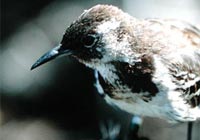DNA collected by Darwin in 1835 may help resurrect a rare mockingbird
 London, November 18 : With the help of some specimens collected by Charles Darwin in 1835, a rare mockingbird could be soon reintroduced to the Galapagos Islands by a team of geneticists.
London, November 18 : With the help of some specimens collected by Charles Darwin in 1835, a rare mockingbird could be soon reintroduced to the Galapagos Islands by a team of geneticists.
According to a report by BBC News, the geneticists used two specimens that Darwin and Robert Fitzroy, the captain of HMS Beagle, collected from Floreana Island during their trip to the Galapagos more than 170 years ago.
The Floreana mockingbird became extinct on the island soon after this famous expedition, mainly because of the human impact on its delicate habitat.
Today, only two small sub-populations survive on two tiny satellite islets - Champion and Gardner-by-Floreana.
Karen James, a Natural History Museum of London researcher, said that the Floreana mockingbird was one of the rarest birds in the world.
"It was also important for Darwin''s realisation that organisms might evolve independently on islands," she told BBC News.
The Charles Darwin Foundation, which carries out conservation research in the Galapagos, plans eventually to reintroduce the birds to Floreana.
But for this reintroduction to be effective, a population would have to be restored that was "as close as possible to what existed before", according to Dr James.
To find out what this population would look like, the scientists needed to study the Floreana birds.
"There are very few of these specimens. But the Natural History Museum has two of them and they just so happened to have been collected by Darwin and Fitzroy," Dr James explained.
Dr James and her colleagues were given the opportunity to take tiny samples from the toe pads of each historic specimen, from which to extract DNA.
The team found "genetic signals" in each of the two surviving species that were also present in Darwin''s samples.
This revealed that the two sub-populations split from each other very recently.
This split, according to the researchers, was likely caused by the Floreana mockingbird becoming extinct.
Its extinction would have severed a "bridge" between the two populations - meaning that it was no longer possible for them to interbreed.
Even though they have evolved independently and become inbred, this study showed that the tiny sub-populations have retained much of the important "genetic variation" once found in the mockingbirds on Floreana.
This is good news for the survival of the species.
It has led the researchers to conclude that future conservation plans should focus on protecting "the two satellite populations in situ and establishing a single third population on Floreana".
This reintroduction could use birds from both islands, the researchers said, "to maximize genetic diversity". (ANI)